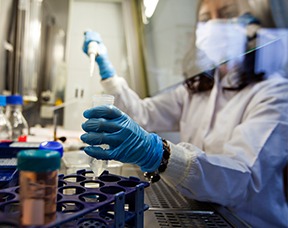(PRWEB) OCTOBER 17, 2017
A study published in the Journal of American Physicians and Surgeons is showing that there is a greater than 90% probability of predicting prostate cancer before the disease shows any symptoms and medical diagnosis from metabolic profiling and a urine sample.
“Advances in medicine, such as metabolic profiling, are what keeps hope alive and well in predicting diseases such as prostate cancer,” stated Dr. David Samadi. “This study shows the more our researchers and scientists keep looking for ways to find the possibility of cancer at the earliest stage possible, the far greater advantage there is of getting it treated and taken care before it takes hold.”
Metabolic profiling is the measurement of low molecular weight metabolites and their intermediates showing dynamic responses to stimuli, found in both normal and diseased conditions. The measurement and interpretation of the endogenous metabolite profile which can come from a urine sample, can provide the chance to investigate changes induced by external stimuli.
“As far back as the late 1960s, the concept of metabolic profiling, which focused on readily available measured biomarkers in body fluids like urine, was pioneered by Arthur Robinson along with his colleagues at the University of California at San Diego, Stanford University, and the Linus Pauling Institute of Science and Medicine,” explained Dr. Samadi. “These researchers found patterns that existed for many conditions including multiple sclerosis, muscular dystrophy, and Huntington’s disease. Unfortunately, due to limited progress of technology at that time and a lack of longitudinal samples, research was stalled.”
Since that time, the Oregon Institute of Science and Medicine has developed a urine sample bank with cryogenically preserved specimens from 5,000 volunteers, who periodically send urine samples and an update of their medical history. If there are enough subjects who develop a condition of interest, these samples can be analyzed. Information from individual patients’ serial samples can be used to monitor their health and assess the effect of interventions on the probability of developing a disease.
Dr. Samadi went on to explain, “Nuclear magnetic resonance spectroscopy helps to analyze the samples by simultaneously quantifying over 800 urinary molecular components of human metabolic origin. Using this technique, researchers can examine profiles for aging, sex, prostate cancer along with also breast cancer and heart disease.”
The ability to analyze profiles for aging and sex were found not to be of much use as the researchers were looking at chronological age instead of physiological age, which had a higher impact on metabolism.
“What is very exciting is that for both breast and prostate cancer, the researchers identified a 94% and 97% probability, respectively, that patterns predictive of these diseases have been identified,” exclaimed Dr. Samadi. “It was even better news for heart disease as there is a 99% chance of identification of a profile predictive of a cardiac event.”
Eventually, in the future, the researchers hope to develop an affordable $5 test that can measure common metabolic products. These measurements and profiles are predicted to have the ability to have a strong potential for preventive, diagnostic, therapeutic medicine.
“Right now, the future looks promising for cancer including prostate cancer in being able to use this innovative and useful new medical technology,” said Dr. Samadi. “This will make the challenge of my job as a prostate cancer surgeon and urologic oncologist more predictable for my patients in knowing where they stand in regards to having prostate cancer or not and I look forward to having this type of technology commonplace in medicine.”
Patients newly diagnosed with prostate cancer can contact world renowned prostate cancer surgeon and urologic oncologist, Dr. David Samadi, for a free phone consultation and to learn more about prostate cancer risk, call 212-365-5000


